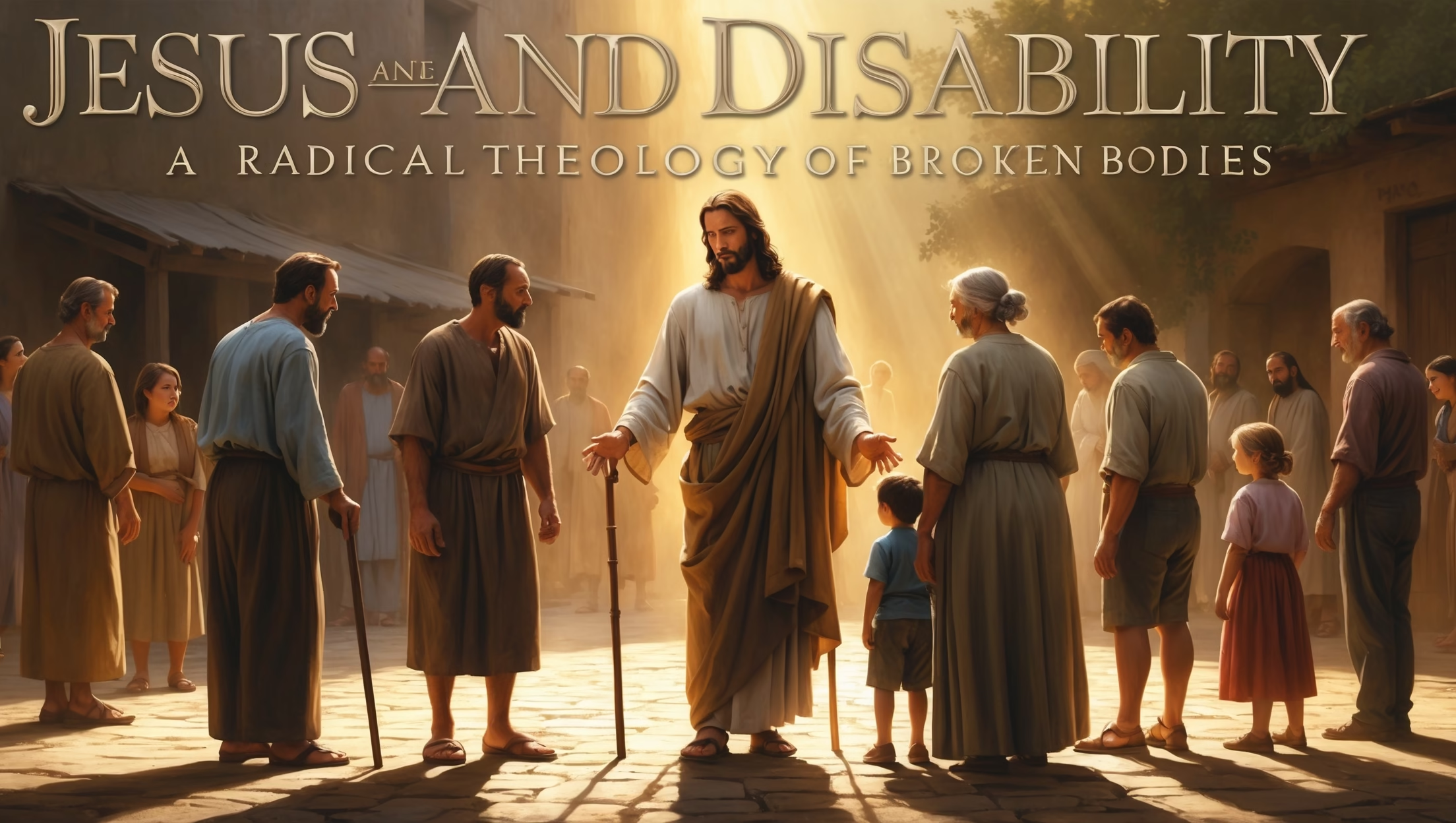How the Gospels Redefine Wholeness
When reading the Gospels, it is clear that Jesus’ ministry challenged societal norms—not just in matters of faith and ethics but also in how bodies were valued. In first-century Palestine, disability was often stigmatized, interpreted as divine punishment, or used to justify exclusion from religious and social life. Yet Jesus’ encounters with people who were blind, lame, or otherwise marginalized reveal a radical theology: broken bodies are fully human and fully capable of reflecting God’s kingdom.
The healing narratives are more than miracles—they are acts of social subversion, theological correction, and profound affirmation of human dignity.
Touch, Spit, and Mud: Subversive Healing Practices
One of the most striking examples of Jesus’ unconventional methods is the healing of the blind man in Bethsaida (Mark 8:23). Jesus “took the blind man by the hand and led him outside the village.” By physically guiding him, Jesus emphasized relational engagement rather than abstract ritual.
In John 9:6, He mixes spit and mud to restore sight. While seemingly odd, this act directly violates purity laws and conventional norms. The method underscores the embodied nature of God’s grace: divine power works through human materials and relationships, not through sterile ritual compliance.
Similarly, the bent-over woman healed on the Sabbath (Luke 13:10–17) defies expectations of religious authority. Her straightening is not only physical restoration but also a symbolic undoing of spiritual and social oppression.
Rejecting the Blame-Theology
A common question in Jesus’ world was, “Who sinned?” (John 9:2), linking disability to personal or familial sin. Jesus rejects this logic consistently. Disabilities are not punishments; they are part of God’s creation. By reframing these experiences, Jesus emphasizes inclusivity and a theology of dignity that recognizes all bodies as reflecting the image of God (imago Dei).
This approach overturns the prevailing notions of honor, shame, and worth that governed social hierarchies in first-century Jewish society. Healing is not merely about restoring function but about dismantling stigma and reclaiming human value.
Modern Implications: Disability and Church Practice
Jesus’ radical theology has profound implications for contemporary faith communities. Many churches have embraced disability ministries that go beyond “healing-only” models, focusing on accessibility, inclusion, and holistic engagement. Neurodiversity initiatives also draw from this vision, recognizing cognitive differences as part of the divine image rather than deficits.
Yet challenges remain. According to the World Health Organization, 90% of children with disabilities in developing nations lack access to church communities. The contrast highlights the ongoing relevance of Jesus’ inclusive ethos: faith spaces must be reimagined to honor and accommodate all bodies.
Theology of Embodied Presence
The consistent thread through Jesus’ encounters with disability is the embodied nature of God’s kingdom. Physical touch, presence, and care communicate divine love in ways words alone cannot. The Gospel narratives reveal that wholeness is not defined by perfection or social acceptability but by relational and spiritual participation in God’s reign.
By healing broken bodies, affirming marginalized individuals, and rejecting blame-theologies, Jesus redefines holiness as accessible, inclusive, and deeply human. This perspective invites modern communities to reconsider their practices, theology, and cultural assumptions about disability.
Key Insight: Disability as Divine Encounter
Through His ministry, Jesus elevates what society considers weak or unclean, turning perceived limitations into vehicles for divine revelation. The Gospels demonstrate that disability is not a deficit but a site of encounter with God’s power, mercy, and justice.
Understanding Jesus’ radical approach challenges churches, societies, and individuals to build communities that embrace difference, promote inclusion, and reflect the full dignity of every person—visible or invisible, abled or differently abled.








